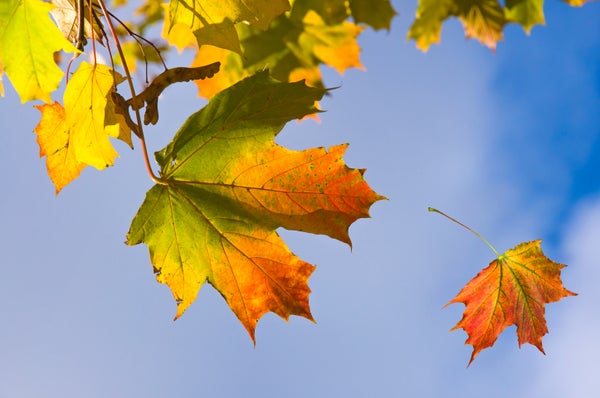October 18, 2024
4 min read
What Brilliant Fall Leaf Colors Tell Us about Tree Health and Climate
A tree’s fall palette offers a glimpse at its health and the weather it has experienced in a given year
Larisa Fedotova/Getty Images
Before the advent of pumpkin spice lattes and Halloween decorations, the most reliable indication of autumn’s arrival lay in the tree canopy as its greens gave way to yellows and reds and its leaves then fell away.
That process is shaped by weather both in the autumn and throughout the year, which means that individual years can produce strikingly different foliage displays. It also means that as climate change manifests in weirder conditions, fall will start to look different. Studying what’s happening and why could help scientists understand how trees and forests are faring at this key seasonal shift.
As the sun begins setting earlier and temperatures dip, “much like the rest of us, trees are identifying that it is autumn and that winter is coming,” says Amanda Gallinat, an ecologist at Colby College. For some trees, the onset of cold weather doesn’t change their survival strategy: most firs, pines and spruces will carry on as usual, looking more or less as green in winter as ever. But deciduous trees such as most oaks and maples follow a different strategy, shedding their leaves to endure the winter bare-branched.
On supporting science journalism
If you’re enjoying this article, consider supporting our award-winning journalism by subscribing. By purchasing a subscription you are helping to ensure the future of impactful stories about the discoveries and ideas shaping our world today.
These trees go bare because in winter’s harshness, leaves can’t store enough energy to make up for the water a tree loses through them. And by letting go of their foliage on their own schedule, deciduous trees can typically reabsorb some of the expensive nutrients in those leaves to reuse in the next growing season. The process…
Read the full article here







